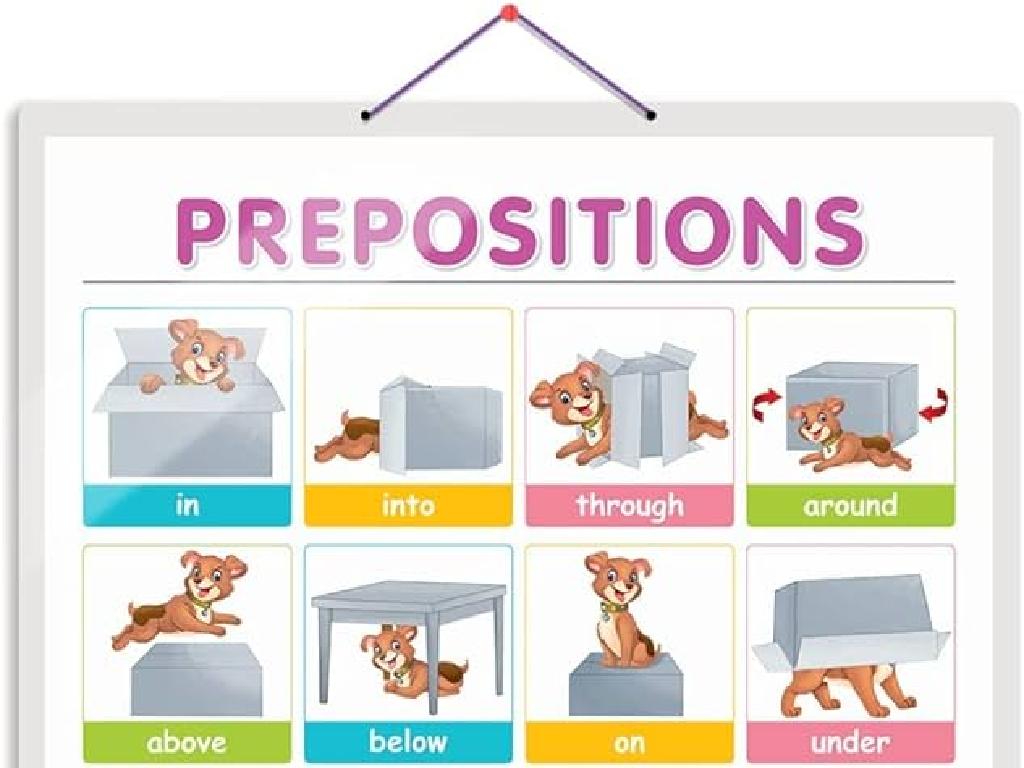Thurgood Marshall
Subject: Social studies
Grade: Third grade
Topic: Historical Figures
Please LOG IN to download the presentation. Access is available to registered users only.
View More Content
Learning About Thurgood Marshall
– What is a historical figure?
– Someone who did important things in the past.
– Meet Thurgood Marshall
– Thurgood was the first African American Supreme Court Justice.
– His role in history
– He fought for equality and justice for all people.
– Why he is celebrated
– His work changed laws and made history.
|
Begin the lesson by engaging students with the question about historical figures to assess their prior knowledge and to get them thinking about the importance of people in history. Introduce Thurgood Marshall as a key historical figure, emphasizing his role as the first African American Supreme Court Justice. Discuss his significant contributions to civil rights and equality, highlighting his work in landmark cases like Brown v. Board of Education. Explain how his efforts have had a lasting impact on the legal system and society. Encourage students to think about how one person’s actions can make a difference in the world. This will set the stage for further discussion and activities related to Thurgood Marshall’s life and legacy.
Who Was Thurgood Marshall?
– Thurgood Marshall: A Great Lawyer
– He worked hard to change unfair laws.
– Fought for Equality and Justice
– He believed everyone should be treated the same.
– First African American Supreme Court Justice
– Appointed to the highest court in 1967.
|
Thurgood Marshall was a significant figure in American history, known for his legal expertise and dedication to civil rights. As a lawyer, he won many cases that fought against racial segregation and inequality. His most famous case was Brown v. Board of Education, which led to the desegregation of public schools. In 1967, he made history by becoming the first African American to serve on the U.S. Supreme Court, where he continued to advocate for the rights of all people. When discussing Marshall, emphasize his role in fighting for justice and how he helped to shape a fairer society. Encourage students to think about the importance of equality and how one person can make a difference in the lives of many.
Early Life of Thurgood Marshall
– Born in Baltimore, Maryland
– Learned Constitution as punishment
– He memorized the entire Constitution!
– Became a lawyer to fight injustice
– Wanted to help people treated unfairly
|
Thurgood Marshall’s early life laid the foundation for his future as a champion of civil rights. Born in Baltimore, Maryland, his experiences growing up in the early 20th century America shaped his desire to combat injustice. An interesting anecdote for the students is how a punishment in school turned into a learning opportunity; Marshall was made to write out the Constitution as a consequence for misbehavior, which he eventually memorized. This not only shows his intelligence but also his early connection to the American legal system. His decision to become a lawyer was driven by a strong sense of justice and a desire to ensure fair treatment for all, setting an example for how one can turn their passion into positive action. Encourage students to think about how learning and sometimes even unpleasant experiences can lead to great achievements.
Thurgood Marshall’s Fight for Justice
– Worked at the NAACP
– NAACP stands for National Association for the Advancement of Colored People.
– Won cases against segregation
– His victories in court helped ensure that people of all colors could be together in schools and other places.
– Famous for Brown v. Board case
– This case made it so that children of any color could go to school together.
– Helped end unfair treatment
|
Thurgood Marshall was a powerful lawyer who dedicated his life to fighting for equal rights. He worked with the NAACP, an important organization that aimed to eliminate race-based discrimination. Marshall is best known for his victory in the Brown v. Board of Education case, which was a turning point in the struggle for civil rights, leading to the end of legal segregation in public schools. This case was a major step towards equality in the United States, showing that the law could be used to protect the rights of all citizens. When discussing Marshall’s impact, emphasize his dedication to justice and equality, and how his work still affects our lives today. Encourage students to think about fairness and how laws can help make society more just for everyone.
Thurgood Marshall and Brown v. Board of Education
– Case for school integration
– All children, no matter their race, should learn together.
– Thurgood Marshall’s argument
– Marshall fought against ‘separate but equal’.
– Supreme Court’s historic decision
– The Court decided separation was unequal.
– Schools became integrated
|
This slide introduces students to the landmark case Brown v. Board of Education, which was a pivotal moment in the Civil Rights Movement. Thurgood Marshall played a crucial role as a lawyer in arguing that segregation in public schools was unconstitutional. The Supreme Court’s decision led to the integration of schools across America, which was a significant step towards equality. It’s important to discuss the impact of this case on the lives of students today and how it helped shape a more inclusive society. Encourage students to think about how attending school with children of different backgrounds can be beneficial for everyone.
Thurgood Marshall’s Legacy
– Appointed to Supreme Court in 1967
– Fought for rights of all Americans
– Worked to make sure everyone was treated fairly under the law
– Served on court for 24 years
– Retired after a distinguished career
– His work continues to impact lives today
|
Thurgood Marshall was the first African American to serve on the U.S. Supreme Court. Appointed in 1967, he was a champion for civil rights and equality, working tirelessly to ensure that the rights of all Americans were protected by the law. During his 24 years on the Supreme Court, he contributed to many important decisions that helped to end racial segregation and discrimination. His retirement in 1991 marked the end of a remarkable career that changed the landscape of American law and society. When discussing Marshall’s legacy, emphasize his role in shaping fair treatment for all people in the United States. Encourage students to think about how his work affects their lives today and the importance of standing up for what is right.
Remembering Thurgood Marshall
– Thurgood Marshall’s enduring legacy
– Passed away in 1993, but remembered for his contributions.
– He taught us to stand for justice
– Stood up for equality and rights for all people.
– Honoring his courage and commitment
– Celebrated for his bravery in the face of adversity.
– His impact on American society
– Helped to make laws fairer for everyone.
|
Thurgood Marshall was a significant figure in American history, known for his legal prowess and dedication to civil rights. As the first African American Supreme Court Justice, his work helped to end racial segregation and promote equality. His legacy is not just in the past; it influences the present and future of justice in the United States. When discussing Marshall, emphasize his role in landmark cases like Brown v. Board of Education and his belief in the power of the law to bring about change. Encourage students to think about how one person’s actions can make a difference in society and inspire them to stand up for their own beliefs.
Role-Play: Thurgood Marshall’s Court Cases
– Split into groups for role-play
– Act out Thurgood Marshall’s cases
– Each student plays a different role
– Discuss the fight for justice
– Reflect on Thurgood’s impact on law and equality
|
This class activity is designed to engage students in the history of Thurgood Marshall through interactive role-play. By assigning roles of Thurgood Marshall, judges, and other key figures, students will gain a deeper understanding of his influence on the American legal system and civil rights. After the role-play, lead a discussion to help students articulate what they’ve learned about justice and equality. Possible activities: 1) Reenact Brown v. Board of Education, 2) Discuss Marshall’s role in ending segregation, 3) Have students prepare arguments for a case, 4) Create a mock trial scenario, 5) Discuss how Marshall’s work continues to influence society today.






